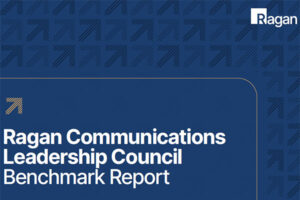How do you begin your ESG reporting journey?
You’ve heard the phrase “ESG.” Now your boss has asked you to publish your company’s first ESG report.

Nancy Mentesana is the executive director and Sara McKinstry is senior advisor, for the ESG practice of Labrador U.S., a leading global communications firm focused exclusively on corporate disclosure documents.
You’ve heard the phrase “ESG.” Now your boss has asked you to publish your company’s first ESG report.
The topics that fall under the umbrella of corporate environmental, social and governance (ESG)—from ethics to human capital management to climate change— are not new. But the imperative for businesses to address them and report publicly on progress is.
New ESG-related regulations, questionnaires and rankings, and voluntary standards seem to emerge every year and evolve quickly. As a result, it can be daunting to know where to begin. While each company might travel a different path, we recommend six strategic steps to help publish a first report.
- Get the right people in the room.
Before publishing an ESG report, you need to have information worth reporting. Bring together the right people to help determine your company’s most important (or “material”) ESG topics and what data and information you will share around each. Typical reporting teams often include staff from communications and marketing, legal, investor relations, environmental health and safety, and other departments. Many companies now have chief sustainability officers and teams. If your company does, involve them early and often throughout the reporting process.
- Plan ahead.
Below are suggestions on what early decisions to make when developing a project timeline and budget.
- When to publish? Will you publish before or after your company’s annual meeting? Most ESG reports cover the prior fiscal year’s progress, and more companies are publishing them around the same time as their proxy statements to provide investors and other stakeholders with information they may find useful.
- Who should provide data or review the report before it publishes? Identify subject matter experts across the company from whom you will gather information to include in the report. Concurrently, outline the internal reviews needed for sign-off before publication. These usually include legal, board committees, the CEO, and the board itself.
- How to publish? Will you publish a PDF report on your company’s website, web pages only, or both? Labrador’s benchmarking of the 2021 ESG reports from the Standard & Poor 500’s Top 50 Companies (S+P 50) found that a majority do not print their ESG reports. Will your report be compliant with the Americans with Disabilities Act (ADA)? Deciding these issues early will support a smooth publication process.
- Finalize tools and resources needed.
ESG reporting is becoming more like financial reporting, with quality control and audit trails to support consistency, reliability, and accuracy of the information shared year-over-year. Review the existing digital tools you have and determine what outside help you might need to assist with:
- Interviewing subject matter experts for data related to your ESG topic areas
- Data management and analysis
- Audit trail development
- Writing and proofreading
- Photo management
- Report design
- External assurance of data like greenhouse gas emissions
- Publishing the report. External experts like Labrador can assist with many of these needs.
- Determine key topics on which to report.
There are a variety of sources you can use to determine which ESG topics to include in the report. Your sources could include:
- Stakeholder requested information. One way to determine your company’s most important ESG topics for disclosure is through a materiality assessment, which uses interviews, surveys and other engagement to compare what ESG topics are most important to your stakeholders to what is most important to your company’s leadership.
- ESG regulations in the countries where you report. While several ESG-related regulations are still pending in the US—including on climate, board diversity and cybersecurity— financial reporting includes information on ESG topics like human capital management. In addition, new European Sustainability Reporting Standards (ESRS) might affect your company’s ESG reporting over the next few years.
- What your peer companies report. Companies often benchmark the ESG disclosures of their peers to see what ESG topics and information they share.
- Guidelines from institutional investors and ESG rating agencies. Talk to your investor relations colleagues to learn what institutional investors, proxy advisory firms and ESG rating agencies might require or score highly.
- Questions asked by ESG-related rankings. Groups like Ecovadis, CDP and others invite companies to answer ESG-related questions for scoring.
- Recommendations from international voluntary ESG frameworks, standards and guidelines. Many companies follow the recommendations of international organizations like the Global Reporting Initiative (GRI), the International Sustainability Standards Board (home to the Sustainability Accounting Standards Board (SASB) standards), and the Task Force on Climate-Related Financial Disclosures (TCFD). Additionally, many companies disclose how their ESG initiatives support the United Nations Sustainable Development Goals (UN SDGs).
- Communicate your ESG story transparently.
We recommend short sentences and an active voice. While you will need to use certain ESG-related terminology around topics like climate or cybersecurity—partly to help artificial intelligence (AI) bots employed by ESG rating agencies find information needed to rate your company—try stay away from too much jargon.
Remember: an ESG report is not a marketing piece. It is meant to be a transparent document that investors and other stakeholders can use to understand your ESG context, priorities and progress. Discuss not only your ESG achievements but also your challenges. If your company is not as far along in its ESG journey as your stakeholders might expect, discuss what is in place to support progress going forward, like oversight of ESG risks and plans to set goals and targets or improve discloser quality. The more concrete and less vague you can be, the better: aspirational claims without evidence your company can meet them might come across as “greenwashing.” We suggest sharing things that will be implemented over the next 1-2 years.
- Make design work for you, not against you.
In addition to following your company’s branding guidelines, the strategic use of quotes, tables, infographics, charts, and other design elements can help your readers more easily understand your information. This is especially important for complex topics. If a simple infographic can convey information faster and more clearly, use it.
- Publish the report and celebrate!
It’s finally time to publish the report! Engage early with your company’s marketing and web teams to promote a smooth report launch. We suggest including links to the report on your company’s investor relations web page and creating at least one web page dedicated to ESG on which you can include links to the report and your company’s ESG-related policies.
Remember: it’s a journey
ESG reporting is a journey, not a one-time event. Start planning early for next year’s report. Take the time to solicit feedback from the investors and other stakeholders who may have read your report. You can apply these lessons learned to make next year’s ESG report even better.







This is great information. Especially for small to medium-sized public companies who are just getting started on this reporting, it can be very confusing!